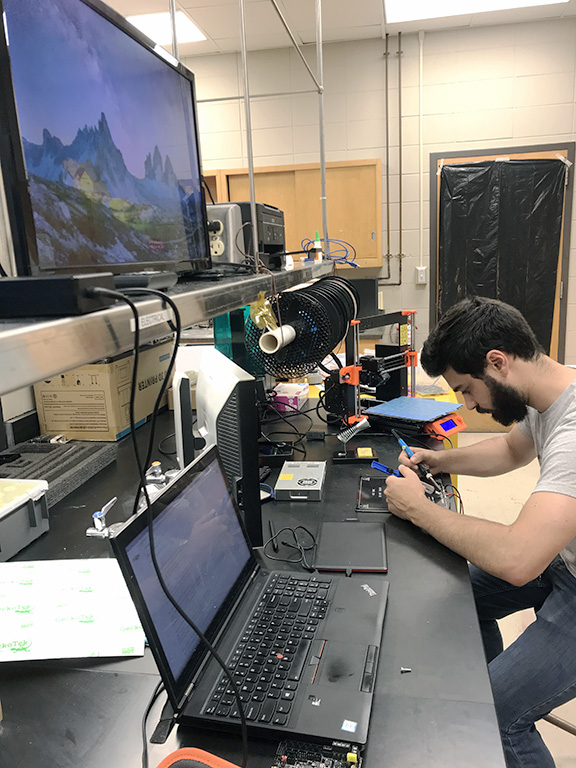Hanley Sustainability Institute

UD student research exploring if plastic waste can be transformed into 3-D printer products
By Mark Gokavi
Note: This the second in a three-part series on summer 2021 undergrad research funded by the Hanley Sustainability Institute.
Under the direction of Associate Professor of Civil and Environmental Engineering and Engineering Mechanics Denise Taylor, University of Dayton student Peter Fabe is assessing recycled plastic and considering the design of a plastics processing machine to bridge from post-consumer waste to the plastics input for 3D printing.
“I have been exploring plastic waste reclamation infrastructure, which has included a tour of Rumpke’s recycling facility in Cincinnati to recognize and assess barriers to creating a tighter circular economy surrounding plastic production, use and reuse,” said Fabe, a mechanical engineering major and religious studies minor who is pursuing his honors thesis. “This research complimented my honors thesis as well, which is a comparative study of virgin to recycled polylactic acid (PLA) and polyethylene terephthalate glycol (PETG) plastics in 3D printing applications.”
He plans to develop contacts with solid waste management agencies and research the post-consumer plastic recycling and waste stream processes.
“My hope is to continue my research here at UD in graduate school, during which I will further my research and machine development for a low-cost, open-source desktop 3D printer that will be able to print with locally processed 100% recycled thermoplastics,” Fabe said. “I would like to continue to work with our faculty and administrators with the goal of transforming the plastic waste we generate on campus into a usable and sustainable material that can be provided to students at little or no cost for campuswide 3D printing within the next 3-5 years.”
Fabe also worked on a project with the ETHOS Center through a partnership with Minvayu, a non-profit based out of Auroville, India. Fabe said MinVayu's mission is to empower communities through open-source sustainable product development innovations, primarily focusing on 3D printing technologies.
Fabe said he spent the summer of 2019 working with MinVayu’s large format earth-based printer in Auroville, which sought to use a sustainable concrete-like slurry to print pottery and architectural structures.
“MinVayu has since shifted its focus to recycled plastic processing in order to develop affordable, open-source systems for cleaning, grinding, and utilizing recycled plastics for manufacturing and 3D printing capabilities,” Fabe said. “My work for them this summer has consisted both of developing an affordable, easy to use plastic washer that can be powered without electricity and assisting them remotely with machine design and troubleshooting for their printer.”
For more sustainability news and information, visit HSI’s news blog, the Hanley Sustainability Institute website and the sustainability program website. To sign up for HSI’s Sustainability Spotlight newsletter, register here.
